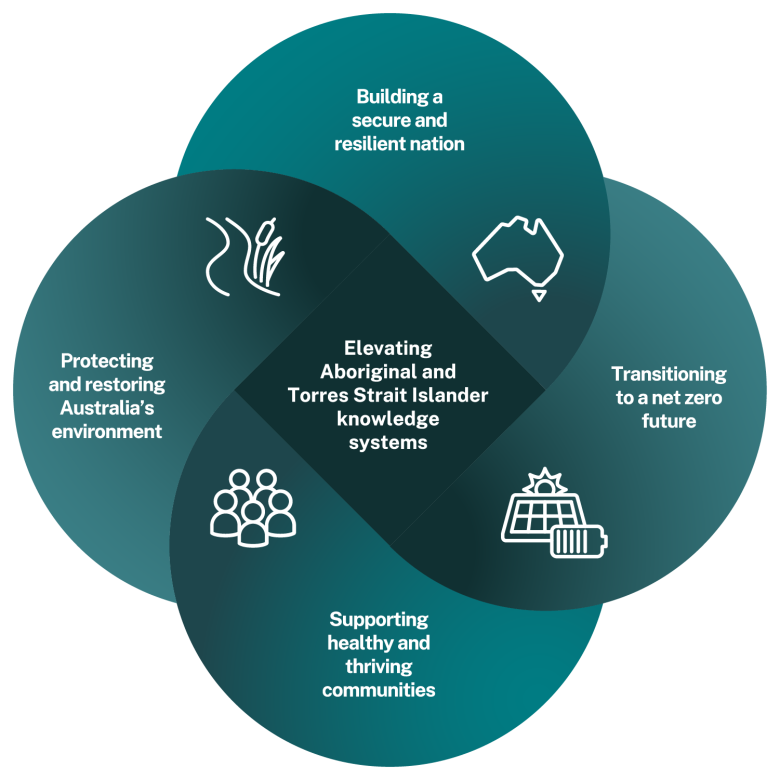The new priorities were shaped by a national conversation led by Australia’s Chief Scientist, Dr Cathy Foley. During that conversation, Australians consistently identified key priorities that cut across traditional discipline and sector boundaries. These are:

National Science and Research Priorities
Microscopy Australia’s instruments and experts are supporting researchers to achieve excellent results in all these areas, results that will ultimately benefit the wellbeing and prosperity of all Australians. Examples of projects we’ve enabled in these priority areas include:
Microscopy Australia is a key national research infrastructure for the Net Zero transition. Our facilities support the development of numerous innovative solar energy materials and technologies as well as development of new battery and hydrogen technologies and greener methods for manufacturing ammonia and other significant chemicals. These are complemented by new exploration and processing strategies for the critical minerals needed to develop these net zero technologies.
Microscopy Australia’s instruments play an essential role in numerous projects developing new vaccines, drugs, innovative medical devices for preventing, sensing and treating a wide range of diseases. New approaches to combating antibiotic resistance, along with synthetic biology and traditional approaches to precision medicine, are also the focus of significant research. The spinout of Vaxxas and the local production of their patented HD-MAP needle-free vaccine delivery system is an ongoing success story made in Australia with global impacts. Microscopy Australia has supported this project since 2009.
Our microscopy also contributes to the ‘Healthy Country, Healthy Community’ aspect of this priority through research aimed at understanding the unique features and properties of our native plant and animal species both on land and in the oceans. The partnership between the University of Queensland (UQ) and the Dugulungi Aboriginal Corporation to harvest spinifex grass for the production of super-strong carbon nanofibres, and the subsequent spin out of Trioda Wilingi from the UQ to develop medical gels from the nanofibres, is one example combining many aspects of this Priority.
Microscopy Australia’s microscopy is supporting and leading projects that elevate Aboriginal and Torres Strait Islander knowledge systems including the partnership between the University of Queensland (UQ) and the Dugulungi Aboriginal Corporation mentioned above, to harvest spinifex grass for the production of super-strong carbon nanofibres, and the subsequent spin out of Trioda Wilingi from the UQ to develop medical gels from the nanofibres.
We are also involved in a number of projects that work with Aboriginal groups, including with the Kandiwal Aboriginal Corporation, to help unravel the history and practices around rock art sites and their preservation, and research on historical banana cultivation in the Torres Strait.
Microscopy Australia has also curated the Stories and Structures – New Connections exhibition that has worked with Aboriginal and Torres Strait Islander artists to relate microscopic images of natural objects to their artwork and stories from around the country. This draws visual and functional parallels between Western and Indigenous knowledge systems with the aims of contributing to reconciliation and elevation of Indigenous knowledge.
We have also worked with Gail Mabo to generate 3D scans of sand grains in preparation for 3D printed versions for her artworks, including Tagai, that focus on raising the profile of Torres Strait Islander navigation systems. We also plan to work with Communities to translate aspects of our education resource, MyScope Explore, into a number of Aboriginal languages.
Microscopy Australia makes significant contributions to preserving and restoring our unique environment. We support a wide range of projects aimed at understanding the unique features and properties of our native plant and animal species in the face of climate change and other human impacts. We also enable technical innovations that help clean up damaged and contaminated environments such as the development of new polymers made from waste that absorb oils, heavy metals and toxic chemicals. We also enable many other projects that are leading the transition to a circular economy that aim to reuse waste to produce innovative and beneficial products.
Microscopy Australia is enabling projects that enhance our ability to respond to shocks such as climate change, natural and manmade disasters. Development of pest and drought-resistant crops support food security; new technologies that provide water purification systems; vaccines to protect people and animals and contributions to a circular economy through the development of innovative products made from waste are all contributing to the creation of a more resilient Australia. We also support projects that enable more efficient discovery and use of our own natural resources and manufacturing industries for more secure supply chains.
Crafted by Lawson 'Wukawe' Dodd for the Department of Industry, Science and Resources (DISR), 'A Cultural Synergy' is a digital vector artwork symbolising the integration of Aboriginal and Torres Strait Islander knowledge into Australian culture, economy, and science.
August 12, 2024